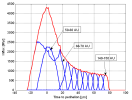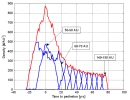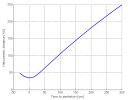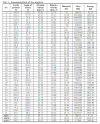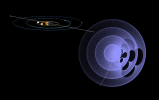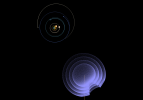Regarding the question of new moons being discovered around the gas giants, it was this article from back in 2007 that I was thinking of:
_http://www.sott.net/article/128992-Forget-About-Global-Warming-We-re-One-Step-From-Extinction
The explanation given most often to explain this surge in the numbers of satellites for these planets is that telescopes have gotten better. That is, we can see further, with greater detail, and can therefore find things that we couldn't see before. It is an explanation that makes sense. One small problem with this theory is that the "new" moons of Neptune and Uranus showed up before the new moons of Jupiter and Saturn. One would think that powerful telescopes capable of finding moons as far away as the seventh and eighth planets would have found the hard to see moons of the fifth and sixth first.
Another possible explanation, and one which fits with new moons appearing around Neptune and Uranus prior to appearing around Jupiter and Saturn, is that these new moons, or some of them, are objects that have been trapped into orbits around these planets only recently, that they were captured by the gravity of these planets and removed from the incoming comet cloud. Passing the orbits of the outer planets first, they would arrive at the inner planets afterward.
However, the simulations suggest that it would take the swarm only 13 years to begin impacting the inner solar system, so the timespan implied by the above (a few decades) would be incompatible with this scenario.
What is interesting, the energy fluctuates widely even for such small bodies. The maximum is in thousands of kilotons. But for such small bodies the probability is high that they will disrupt in the atmosphere. But of course that depends also on their composition.
Indeed. That's what I was thinking: since it's the kinetic energy that does the damage, and K = 0.5mv2, energy will be highly stochastic with time due to the velocity dependence, while the impact number will be a much smoother function of time. Obviously, the majority of them will break up in the atmosphere, although this will depend on mass and impact angle as well as composition. However, even the airbursters might still do substantial damage at ground level. Hydrodynamic simulations have shown that even when the comet does not physically reach the ground, the supersonic vortex generated by the impact with the atmosphere can do so, as a supersonic blast hotter than the surface of the Sun.
_https://craterhunter.wordpress.com/the-planetary-scaring-of-the-younger-dryas-impact-event/a-thermal-airburst-impact-structure/
So impactors could be divided into three categories, based on two kinetic energy thresholds, which I will denote K0 and Kb (for 'burst'):
1) K < K0: at most, a pretty light in the sky. No ground damage.
2) K0 < K < Kb: impactor breaks up, but K is sufficient to send a shockwave to the ground. Chelyabisnk or Tunguska type events would be in the upper end of this regime.
3) K > Kb: at least part of the impactor reaches the surface, leading to an impact crater on land or a tsunami on water.
Composition is obviously a factor. Typically comets are thought to be very low-density, largely composed of water ice, small rocks, and dust, basically fluffy aggregates. Density measurements support this. Spectroscopy of the surface does not. If the EU community is right, the comets are in fact made of solid rock, and the apparent low density is due to the gravitational field being partially counteracted by electrical charge. Then again, if the EU folks are right, the Oort Cloud doesn't exist. My personal bet is that there's a lot they aren't right about.
The next issue is impact angle
i, which you already calculate (albeit in 2D, I take it). This will affect the air resistance, so in practice K0 and Kb will be functions of
i (as well as composition of course).
At any rate, using the categories above, the E(t) variation could be sorted as a histogram of No. of impactors in a given kinetic energy category as a function of time. This could then be calibrated using AMS data (which will be sensitive the first category), as well as studies such as the following:
_http://adsabs.harvard.edu/abs/2015MNRAS.447..769B
_http://adsabs.harvard.edu/abs/2015MNRAS.446L..31D

